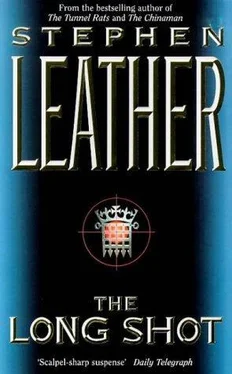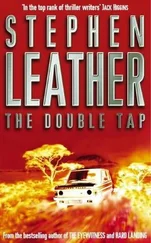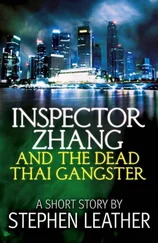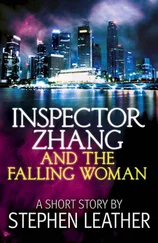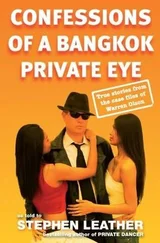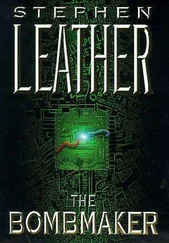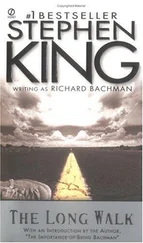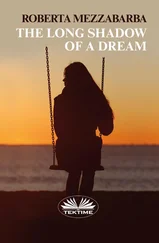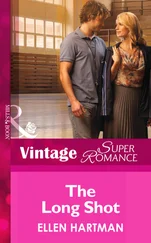Stephen Leather - The Long shot
Здесь есть возможность читать онлайн «Stephen Leather - The Long shot» весь текст электронной книги совершенно бесплатно (целиком полную версию без сокращений). В некоторых случаях можно слушать аудио, скачать через торрент в формате fb2 и присутствует краткое содержание. Жанр: Триллер, на английском языке. Описание произведения, (предисловие) а так же отзывы посетителей доступны на портале библиотеки ЛибКат.
- Название:The Long shot
- Автор:
- Жанр:
- Год:неизвестен
- ISBN:нет данных
- Рейтинг книги:5 / 5. Голосов: 1
-
Избранное:Добавить в избранное
- Отзывы:
-
Ваша оценка:
- 100
- 1
- 2
- 3
- 4
- 5
The Long shot: краткое содержание, описание и аннотация
Предлагаем к чтению аннотацию, описание, краткое содержание или предисловие (зависит от того, что написал сам автор книги «The Long shot»). Если вы не нашли необходимую информацию о книге — напишите в комментариях, мы постараемся отыскать её.
The Long shot — читать онлайн бесплатно полную книгу (весь текст) целиком
Ниже представлен текст книги, разбитый по страницам. Система сохранения места последней прочитанной страницы, позволяет с удобством читать онлайн бесплатно книгу «The Long shot», без необходимости каждый раз заново искать на чём Вы остановились. Поставьте закладку, и сможете в любой момент перейти на страницу, на которой закончили чтение.
Интервал:
Закладка:
“Loud and clear,” said Howard. “Though I was sort of hoping that you’d do it as a public service.”
Kratzer stopped and looked at Howard as if to see if he was joking. Suddenly he burst into laughter and slapped Howard on the back. “Hell, and I thought you FBI guys had no sense of humour.”
Howard took him along to the interview room and held the door open for him as he tried to guess how much money the former Marine might be talking about. The room contained a large desk and several chairs and Kratzer slid into the largest. He looked at a chunky gold watch on his wrist. “Okay, my meter is running, let’s get on with this. What do you want to know?”
“Snipers,” said Howard, “I want to know what sort of men they are.”
Kratzer leaned back in his chair and looked up at the polystyrene-tiled ceiling. “A sniper is the most cost-effective killing machine there is, and at the same time he’s one of the most maligned,” he said, speaking as if he were delivering a speech to a large auditorium. “During the Second World War, to kill one enemy soldier the Allied Forces had to fire about twenty-five thousand rounds. In Korea our soldiers had to shoot an average of fifty thousand rounds and by the time Vietnam came around that had jumped to two hundred and fifty thousand. Just think about that, Special Agent Howard, a quarter of a million bullets fired just to kill one VC. And that doesn’t include all the bombs we dropped on them. Now, take the sniper. When I was in Nam, our unit averaged 1.5 rounds per kill. For every three bullets we fired, we killed two Victor Charlie. The sniper’s the surgeon of the battlefield. He goes in with his rifle, takes out an assigned target, and returns to his base. It’s the cleanest form of combat there is. No innocent bystanders get hurt, there’s no fallout, no dangerous hardware left behind. Snipers are the elite.”
Kratzer lowered his eyes and looked at Howard. “But the generals don’t see the sniper as a saviour, they see him as belonging to the dirty tricks department. I’ve had it said to me by some of our most respected military minds that the snipers are cowards of war, that they shouldn’t even be used. These are the same generals who want to spend billions on nuclear weapons. They’re prepared to kill civilians on a scale undreamed of, but they don’t want to remove one enemy from the battlefield with a single shot. I can see you frowning. You don’t follow me?”
“I follow you, but I don’t see what point you’re trying to make.”
“The point is that snipers have to believe in themselves totally. They have to know that what they are doing is right.” He reached into his jacket pocket and pulled out a paperback book. He threw it onto the desk in front of Howard who picked it up and looked at the cover. ‘Marine Sniper’, it said, and underneath, ‘93 confirmed kills’.
“You want to get inside the mind of a sniper, read this,” said Kratzer. “It’s the biography of a guy called Carlos Hathcock, a gunnery sergeant who served with the Marines and did two tours in Nam. A couple of publishers have been after me to write a book like it, but I’ve never gotten around to it.”
“Ninety-three kills?” queried Howard.
“Confirmed kills,” said Kratzer. “Those are the ones with witnesses. I got eighteen myself, but I was in Nam towards the end, when we weren’t interested in winning. Read that book and you’ll have a good idea of how a sniper thinks. The first kill you’ll read about is a twelve-year-old boy. The kill he’s most proud of is a woman.”
Howard looked at the cover: a painting of a man in a bush hat with a rifle pressed to his cheek, his face smeared with camouflage make-up.
“Long Tra’ng the VC called him, because of a white feather he wore in his hat,” Kratzer continued. “He was just a kid in Nam, but he was an amazing shot. He once plugged a VC at twenty-five hundred yards.”
“Do youngsters usually make the best snipers?” asked Howard.
“Not necessarily,” said Kratzer. “They need to be experienced with guns, so country boys are best, especially ones from poor families who have to hunt to supplement the cooking-pot. An empty stomach is the best incentive there is, right?”
“Right,” agreed Howard.
“But there’s a lot of technical stuff to learn as a military sniper. It’s one thing to hunt rabbits with a shotgun, quite another to nail a VC at a thousand yards. It’s only with age that you get that experience. I was in my late twenties when I was in Nam. Hathcock was twenty-five, I think. But it’s not a skill you lose. There’s some stamina involved, but once you’ve got the technique, and providing you can maintain the level of concentration needed, you could be a world-class sniper well into your forties.”
“I was thinking about what you were saying about conscience. Doesn’t it get harder to pull the trigger as you get older?”
Kratzer smiled. He picked up a match off the desk and began to pick his teeth with it. “I’d have no hesitation at all,” he said. “I went down on bended knees and begged them to send me to the Gulf. I’d love to have blown away a few ragheads.”
Kratzer’s eyes widened. Howard had seen the same hungry look in his father-in-law’s eyes when he was discussing his latest hunting expedition.
Howard held up the book. A soldier who could kill at twenty-five hundred yards sounded like just the man he was looking for. “This Hathcock, is he still in the Marines?”
Kratzer shook his head. “Bit of a sad story, really. He had to leave the Marines for medical reasons a few months before he’d put in his twenty.”
“What was wrong with him?”
“Multiple sclerosis, I think. Shakes all the time. Ironic, isn’t it? His main claim to fame was that he could lie perfectly still and shoot a bullet thousands of feet with almost perfect accuracy. Now he can’t even lift a beer to his lips without spilling it. There’s a lesson there for all of us: when it comes down to it, all you’ve got is yourself to depend on. You can give your all to an organisation like the Marines but if you’re no more use to them, out you go. I tell you, when they call me in to help with their sniper training, they pay through the nose. I’m not giving them the chance to kick me in the balls, no sir.”
Kratzer sounded bitter and Howard wondered if he’d also been put under pressure to resign from the Marines. Howard hadn’t had much experience with snipers, but it seemed to him that there was something not quite right about Kratzer. He was too overbearing, like a television evangelist.
“What’s involved in making a shot of two thousand yards or more?” Howard asked.
“You need a gun that packs a real punch, for a start,” said Kratzer, still working at his back molars with the matchstick. “A lot of snipers in Nam used Model-70 Winchesters, 30–06 Springfield calibre, but I wouldn’t be happy shooting one beyond a thousand yards. Sometime in the late Sixties, 1967 I think, Marine Corps snipers began using the Remington 700 with an M-40 scope. They used the same 7.62 ammo that the M-14 rifle used but it had more than its fair share of problems, not the least being it wasn’t really up to taking the sort of hard knocks a rifle gets out in the field, and neither the stock nor the barrel were camouflaged. The boys at Quantico ended up modifying it to come up with the M-40A1. It had a modified stock of pressure-moulded fibreglass and a twenty-four-inch stainless-steel barrel with a large diameter. I’ll tell you, Agent Howard, with that weapon you could hold your shot group inside a twelve-inch circle at almost fifteen hundred yards. If you were up to it. But for the really long shots we’d use the M-2.50-calibre machine gun, it’s got a stable trajectory for almost three thousand yards. The bullets are so much bigger, you see, 700 grains, so they get more momentum. You could fire one of those babes well over two thousand yards, and with a ten-power telescopic sight like a Lyman or a Unertl you’d have a high degree of accuracy. Maybe not as accurate as the M-40A1, but close. Certainly enough to hit the target and, with the man-stopper bullets, that’s all you’d need.”
Читать дальшеИнтервал:
Закладка:
Похожие книги на «The Long shot»
Представляем Вашему вниманию похожие книги на «The Long shot» списком для выбора. Мы отобрали схожую по названию и смыслу литературу в надежде предоставить читателям больше вариантов отыскать новые, интересные, ещё непрочитанные произведения.
Обсуждение, отзывы о книге «The Long shot» и просто собственные мнения читателей. Оставьте ваши комментарии, напишите, что Вы думаете о произведении, его смысле или главных героях. Укажите что конкретно понравилось, а что нет, и почему Вы так считаете.
